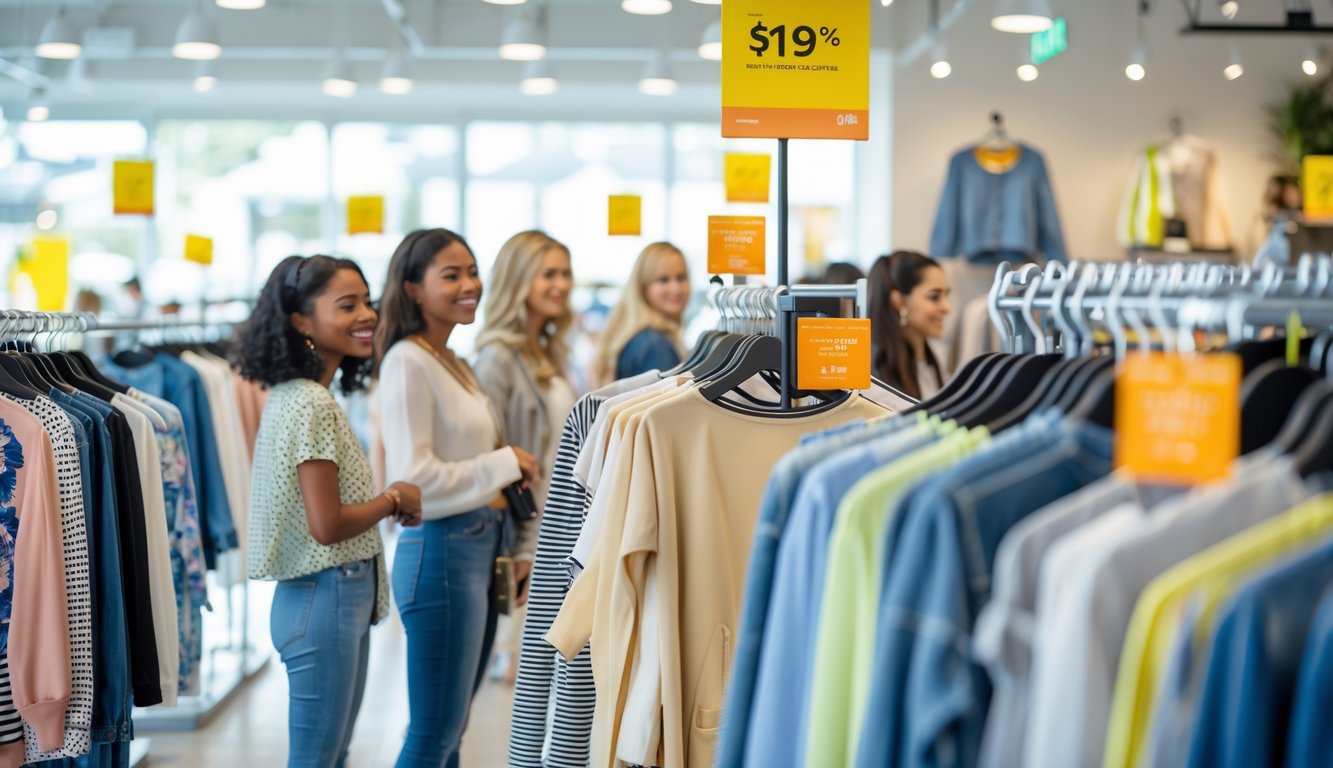
Impact on Luxury Brands
Walked by a luxury pop-up last weekend—three items on promo I swear would’ve been untouchable two years ago. Gucci blazers, Ferragamo flats, even handbags just sitting there with 15% off tags. I used to consult for these brands. Rule #1: Don’t discount. Now? Execs quietly dump “trendy” stuff that AI models guessed wrong on.
A Bain contact told me luxury markdowns went up 9% globally in 2025—“unthinkable,” apparently, but over-ordering and soft traffic did it. Old-school folks still cringe when they see flash sales on Farfetch. Prestige drops, resale tanks, but sometimes you just have to move stock. Clinging to pre-pandemic rules? Good luck.
Holiday Season and Promotional Peaks
Black Friday used to be a big deal. Now, by mid-November, every app is pushing “early access markdowns” on stuff from last week. I bought three flannels in six days—don’t ask. Holiday chaos is real: fulfillment centers scramble for same-day shipping, mistakes pile up, and gift returns jack up markdowns by 12% (NRF, 2024). Brand meetings always circle back to “how do we beat promo fatigue?” Toy brands, beauty, off-price—everyone double-books sales, and one VP called it “discount fatigue.” More markdowns chase viral styles just to beat competitors. And my inbox? Full of requests for “real-time flash sale heat maps.” Whatever those are.
The Growing Role of Artificial Intelligence
Honestly, I never saw this coming. Now, algorithms decide markdowns based on what TikTok’s obsessed with. A Harvard data scientist told me in 2024, 80% of markdown calls at top UK retailers came from AI reading social buzz and sales velocity. “It’s chess, not checkers,” he said, swearing AI cut surplus in kids’ outerwear by 14%.
But AI’s only as good as its data. Mess up the feed, tag things wrong, or glitch on SKUs, and suddenly you’re discounting corduroy loafers three weeks early. When it works, it’s magic—margins survive, clearance flies. But every buyer I know still side-eyes the model, nervous laugh and all. Nobody wants to explain a warehouse full of bucket hats to the board, AI or not.
Frequently Asked Questions
Just so you know, markdowns on hot styles aren’t as random as they look. I’ve seen brands scramble, pulling price tags or slashing numbers, all while dealing with vendor drama and competitor deals flashing across the street. Nobody does this for fun. Every “quick” discount brings a mess.
What triggers retailers to initiate markdowns for popular styles?
Ever notice your favorite stuff suddenly hits clearance? It’s rarely because it’s “old.” Usually it’s inventory overload, or a calendar glitch—sometimes new shipments show up before anyone’s ready. Real-time analytics (think Nordstrom’s sell-through alerts) light up red.
But sometimes it’s just the weather. One year it rained forever, so stores dumped all the linen shirts—except that one person who bought eight. Coupons pile up, margins get wrecked, and somewhere, someone lost a bet on trends.
How do retailers decide which styles to discount?
It’s not like managers throw darts—though honestly, that might be less stressful. Brands use heatmaps from online traffic (I still remember seeing Shopify’s dashboard for the first time—wild) to spot what’s stalling. If floral midi skirts aren’t moving, even after an email blast, they’re next for markdowns.
But then there’s always some exec who thinks a “timeless” piece will come back, so it sits at full price for ages. And influencers? One TikTok at the wrong time, and last season’s “must-have” is toast.
What impact do employee and customer discounts have on retail markdown strategies?
Employee discounts look generous—20%, 30%—but the effect is sneaky. Back when I was at Gap, the best jeans never hit clearance because staff bought them out first. Retailers factor that in, so demand looks higher than it is.
Customer promos? Total chaos. Reward points get dumped all at once, forcing price changes nobody saw coming. I’d love to meet anyone who can track those codes without swearing at their screen.
Why is it important for retailers to monitor competitors’ pricing?
I’ve lost count of the times we had to re-tag shelves mid-day because another store went rogue on Black Friday. When Amazon shifts prices—sometimes hourly—it’s ridiculous how fast everyone else has to scramble.
Best Buy supposedly uses machine learning for pricing, but sometimes it feels random—like, $100 off headphones if it’s raining in Seattle? It’s a mess, and explaining lost margin to finance is even worse.
What are the different pricing strategies retailers can use for various markets?
Silk scarves? In Boston, they’re just always on sale, like, forever. But down in Miami, suddenly it’s all “buy one, get one,” and honestly, who decided that? I used to think it was totally random until these direct-to-consumer brands started running all those weird A/B tests—like, only bundling stuff in cities where people apparently spend less. Makes me wonder, do they just guess or is there some spreadsheet somewhere? Zara does those flash sales, but only in certain places, and Coach is out here with loyalty deals that only work if you happen to live in the right zip code. Seriously, who tracks this?
And wholesale? Ugh, don’t get me started. They’re always pushing for this “suggested retail” thing in their main stores, but then the outlets are just chaos—price tags flying everywhere, nobody following the rules. Prestige pricing is the funniest, though. I literally saw a $2 sweater marked up to $50 because, I don’t know, the display “needed gravitas”? Whatever that means. Makes zero sense.
How do vendor relations influence retail pricing and markdown decisions?
So, one time this entire shipment of denim just rolled in three months late—yeah, three months—because apparently the vendor’s truck was trapped behind a marathon. Like, who plans for that? Suddenly we’re buried in jeans right as spring’s ending, and, surprise, the markdowns kick off two weeks earlier than anyone wanted. Sure, vendor contracts say stuff like “no markdowns before date X,” but, come on, there’s always some weird clause or loophole.
I remember this planner—let’s call her Sarah?—who literally hustled for kickbacks on leftover seasonal junk. She’d practically plead with suppliers to haul their own unsold stuff away. And don’t even get me started on “markdown dollars” or those so-called volume rebates. What a mess. Price reductions are supposed to be simple, right? Nope. It just becomes this endless, exhausting negotiation that nobody actually likes. And honestly, most of the time, whatever drama’s happening between vendors and buyers? That’s what decides what you pay at the register. Not some grand pricing strategy.



